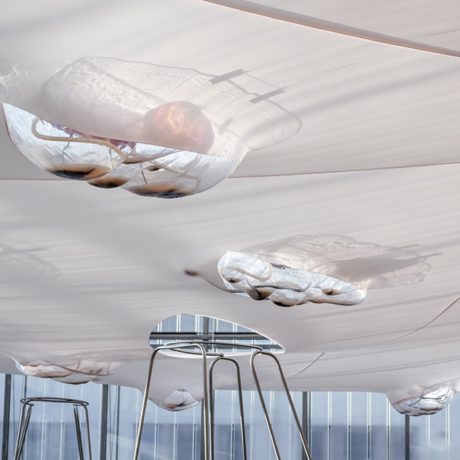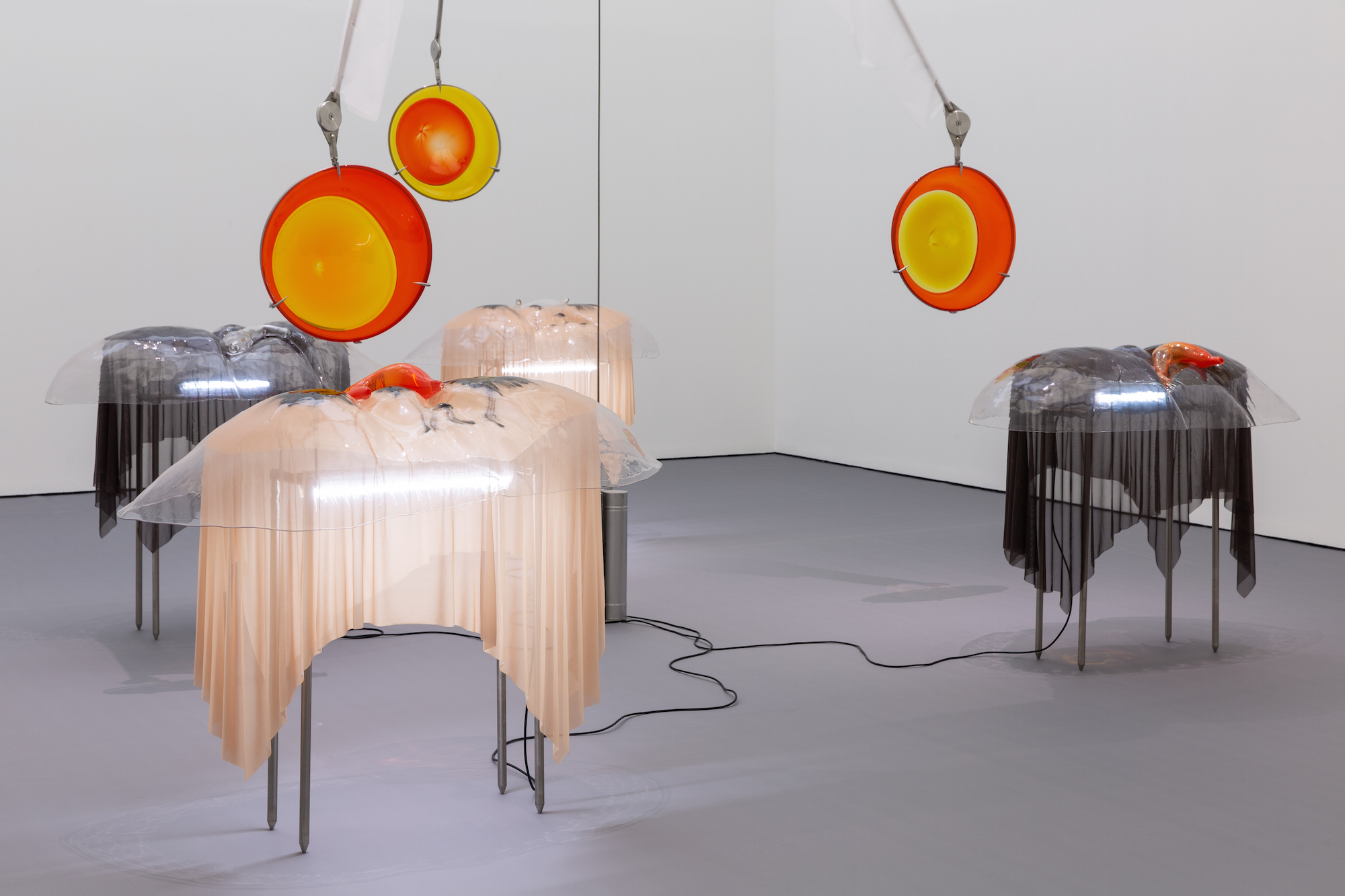
Pakui Hardware is a Lithuanian artistic duo comprised of Neringa Černiauskaitė and Ugnius Gelguda. Since 2014, they have been making conceptual work about how humans relate to capital, materiality, technology and economy. Their installations are made up of plastics, hanging glass, white light and fleshy fabrics—at once bodily but also strangely artificial.
To explore the virtualisation and digitisation of healthcare in their upcoming show at BALTIC, Gateshead, the pair will transform the space to resemble a clinical surgery room. They manipulate the aesthetics of care and medical settings, interrogating the technologies whose job it is to sustain bodies in different states of injury, decline and mutation.
Their work also looks towards possible futures, allowing them to consider the encroachment of technology on human life and relationships. These questions are analysed in a variety of different social and economic settings, from financial trading to synthetic biology.
Pakui Hardware’s practice has taken on a new relevance during the pandemic, bringing issues of absence and remoteness to the forefront of care narratives. “What does it mean when the physical bodies of patients and medical staff don’t meet?” they ask. “When there is no corporeal interaction, no touch?”

How has medicine featured in your practice up to now—and what does it mean to be making work with this focus at the moment?
Our focus turned to contemporary medicine back in 2018 with a piece The Return of Sweetness, which we presented at Tenderpixel gallery in London. That work derived from our thinking and exploring of metabolism—both as a physical process and as a metaphor for the reciprocal, but very much out of balance, relationship of human and environment or nature. We tried to track how a metabolism, which has previously existed on its own in terms of velocity and efficiency, is being monitored and controlled from the outside.
“We reflected on other post-natural human endeavours, such as striving for constant rejuvenation and, finally, immortality”
We looked at how bariatric surgery basically sculpts the human stomach, squeezes it, folds it, removes parts of it. We tried to expose this invasive relationship with organisms, showing its post-natural state in which every molecule is wired for efficiency or is abandoned. From there we reflected on other post-natural human endeavours, such as striving for constant rejuvenation and, finally, immortality. We ended up looking at regenerative medicine and tissue engineering—especially how these fields not only rely on hard science and technology, but also exploring the tacit knowledge of non-human species like the immortal jellyfish, sea-urchins and horseshoe crabs.
In our last two projects—Underbelly (2019) and Virtual Care (2021)—the focus shifted towards the virtualisation of healthcare. The sad irony is that when we began exploring telemedicine and robotic surgery, we couldn’t imagine that virtual care would become the prevailing way of getting medical assistance because of the pandemic.
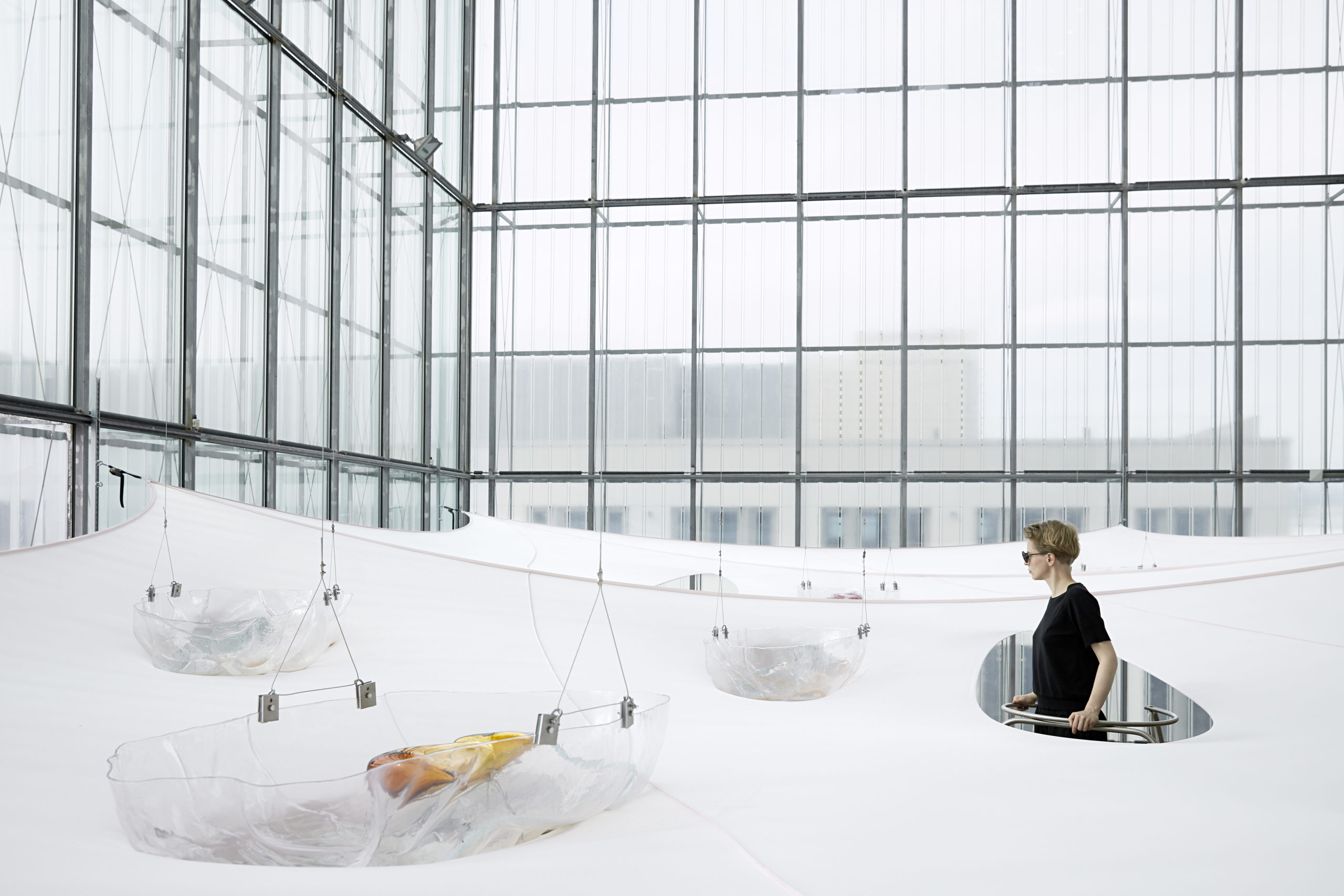
What are you attempting to communicate about the relationship between humans and technology in the BALTIC installation?
Virtual Care continues and expands our interest in the digitisation and quantification of health, bodily experiences and transformations. What does it mean when the physical bodies of patients and medical staff don’t meet? When there is no corporeal interaction, no touch? You might start feeling neglected by the system, overwhelmed by technological care entirely. But when you feel like you’re just bothering and annoying the specialists with your insignificant health issues, it might be more comforting to address technology rather than overworked, tired and underpaid medical staff.
So virtual care is not seen here as something inherently ominous or threatening to the classic human-to-human relation, but more as a mesh of human-technology-economy layers, actions, and actors. As the researcher Jeannette Pols says, there is no pure “cold” technology and “warm” human body—it is always a subtle and complex interaction between these poles.
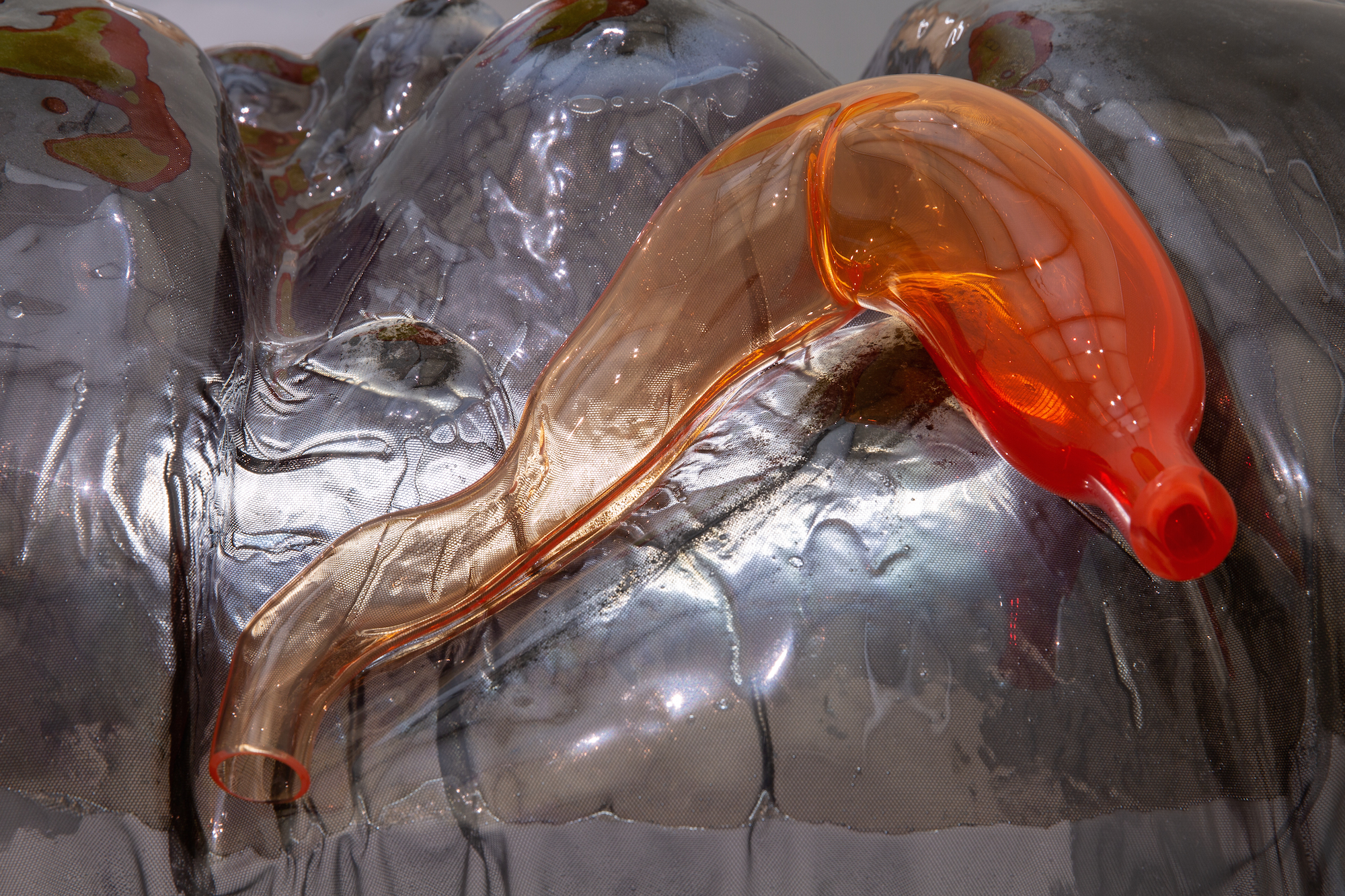
In the installation, we’ve created a sort of surgical room: ghostly space suspended between physical and virtual, bodily and digitised. Bodies and devices are abstracted into sculptural, biomorphic shapes. Transparent thermoformed “bodies” are present and erased at the same time. Glass objects in the hanging surgical lamp sculpture create a sense of warmth and care while the fabrics on its steel arms evoke surgeons’ hands.
“Virtual Care continues and expands our interest in the digitisation and quantification of health, bodily experiences and transformations”
Can you speak a little about the material process of designing and realising these installations? How do you map them out, for example?
The physical spaces where we’re invited to create work often become triggers for the vision of the installation. We don’t work with singular sculptures or pieces, but always attempt to create a certain kind of environment, an enclosed ecosystem. We even play and tease the viewer a little bit: making them feel like an intruder disturbing the internal network and conversations taking place among the installation’s elements.
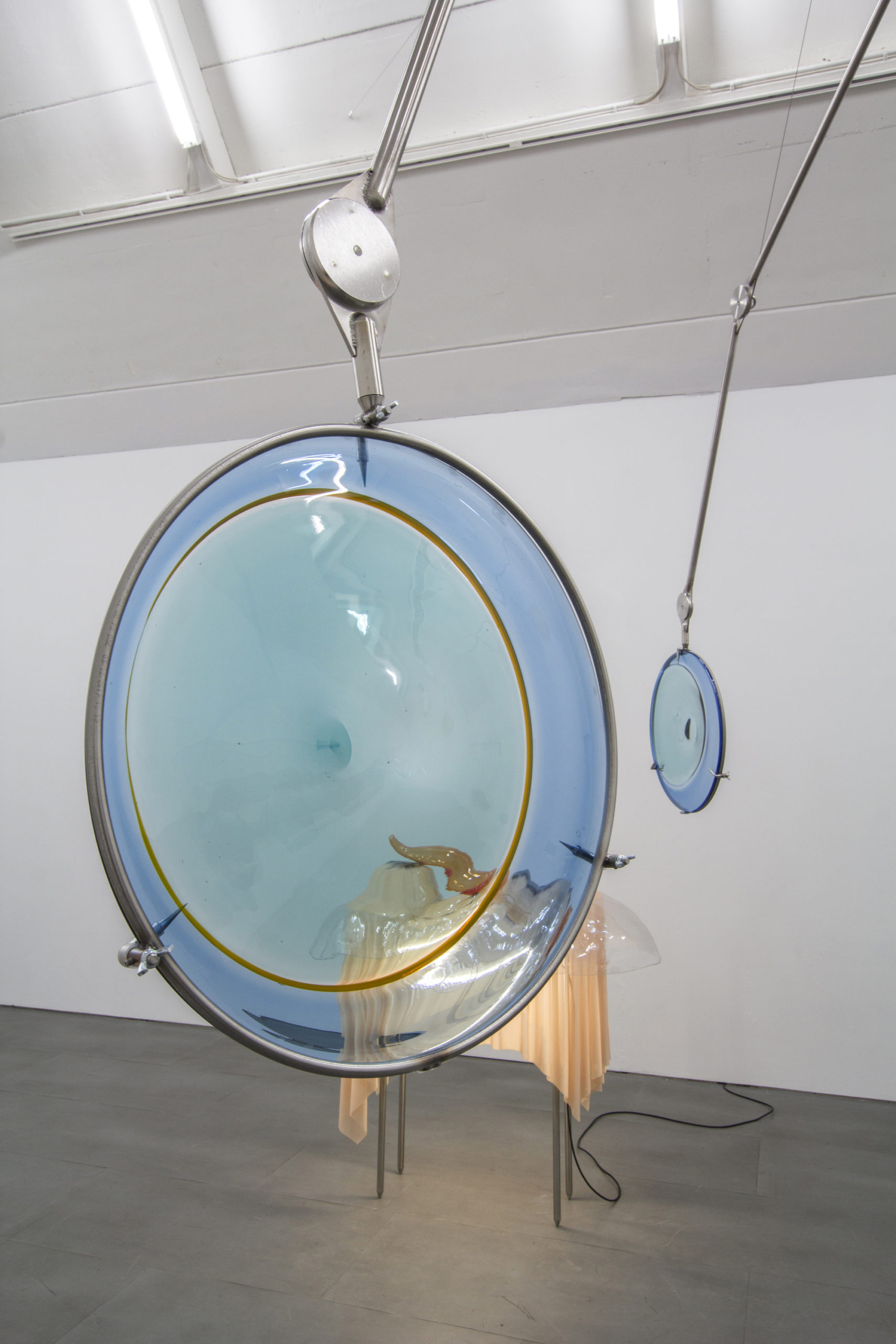
Each new body of work requires a different material approach depending on the space, conceptual framework, references. That’s why our work sometimes seems quite heterogeneous, varying from totemic-like figures built from faux fur, leather and glass “mask”, to thermoformed plastic, which is filled with silicone and other materials. These combinations of materials—their performativity and playing around with properties and original functions—are crucial in our work. Materials, with their stubborn characters, are the third member of Pakui Hardware.
When it comes to mapping out, we tend to collaborate with our fellow architects—Ona Lozuraityte and Petras Išora—especially for large-scale shows like the one at BALTIC or MUMOK in Vienna. We work very intuitively, which is why it is incredibly important to find people who share your vision.
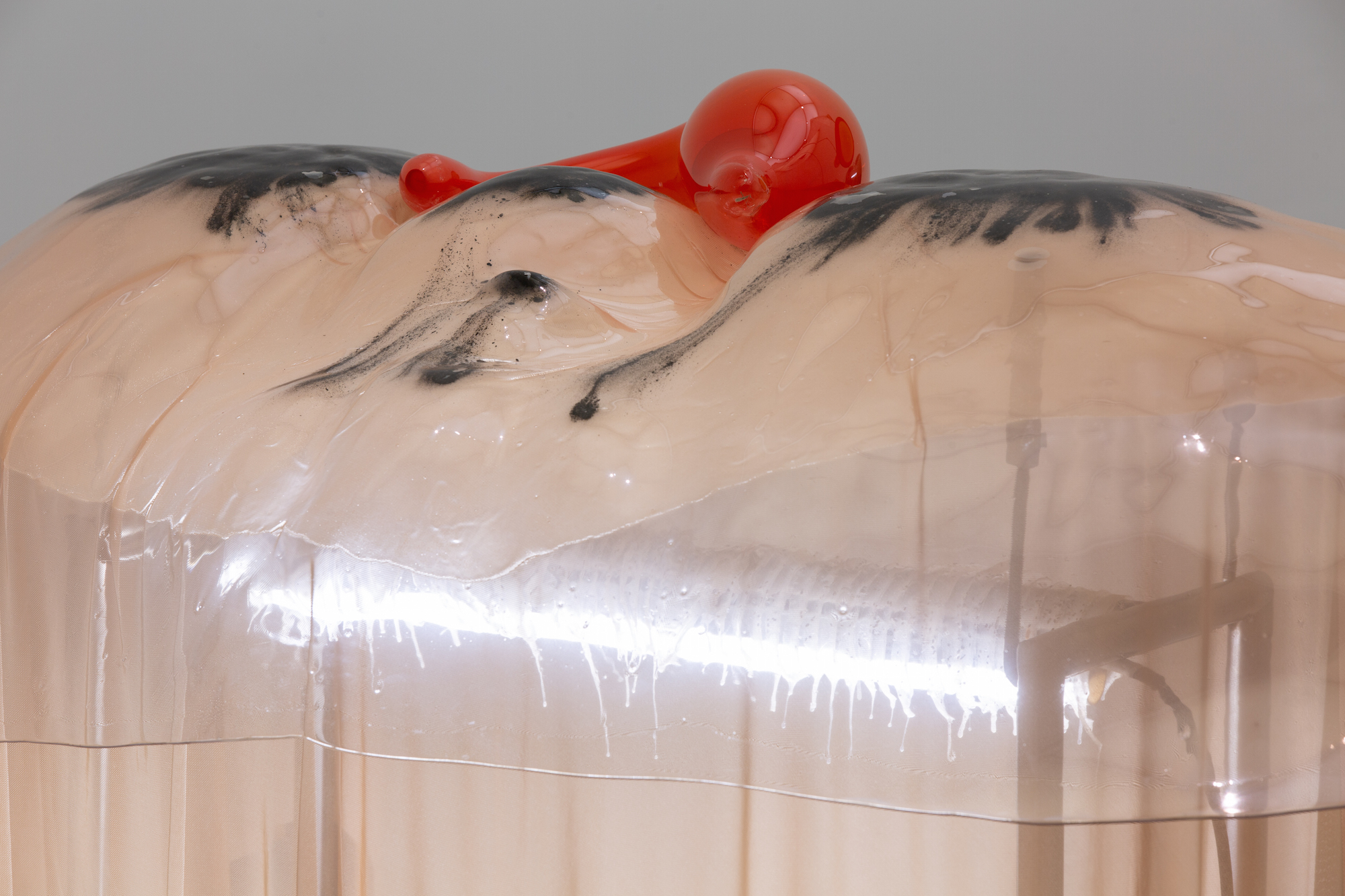
How much of your work is interrogating existing relationships between, say, technology and economics, and how much is envisaging how these will shape the future? How do you view this temporal dynamic?
Existing reality—be it some specific field of science or technology or state of nature—is like an initial trigger for a “wilder” vision of where things could go. When we explore a specific case study, it’s firstly important to map how a certain thing is enmeshed in a wider network of (f)actors: from capital’s expansion to biological processes and human (and non-human) instincts. Then we always make a step forward to envisage how things could develop—or to simply show those exciting, yet at times, frightening processes and states of transformation: of something or someone still becoming, still not yet fully there, but no longer here either.
“What does it mean when the physical bodies of patients and medical staff don’t meet? When there is no corporeal interaction, no touch?”
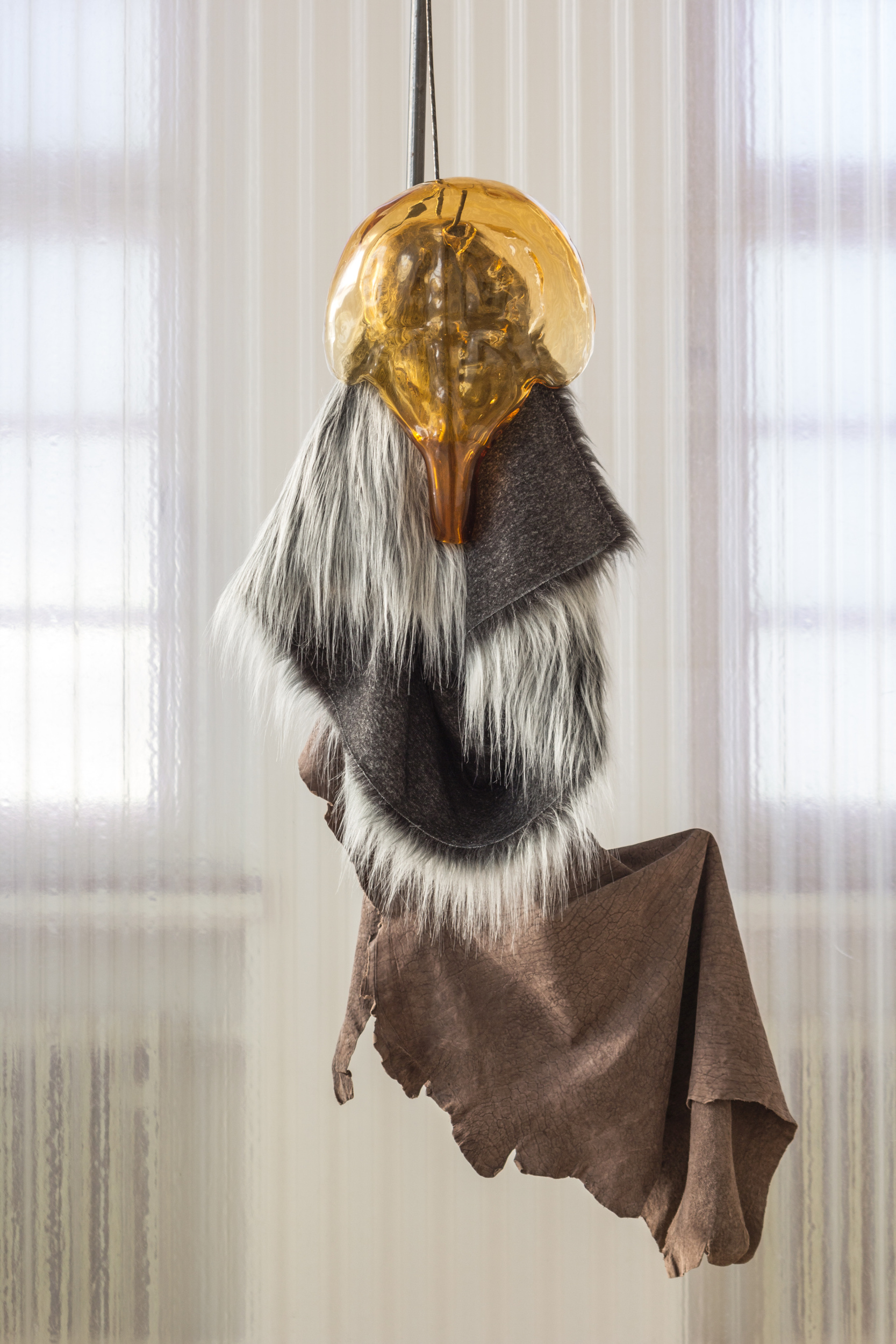
That’s why the works can be read as post-natural, post-organic, post-human, hybrid, even frankenstein-ish. Take the show at BALTIC, for example: it resembles something familiar, like a surgical room or hospital environment, yet it is kind of hyperbolised, estranged and dreamlike—an almost feverish version of the familiar. An alluring yet uncanny vision of a possible future.
Much of your work views the body as an unstable boundary (often bound up with artificiality)—can you speak a little more about how this informs this project?
Body—be it human, non-human or even artificial—has been central to our practice since the inception of Pakui Hardware. Even the name itself carries the meaning of technological body: material, physical and thus vulnerable. In the past, we showed the technological hybridity of bodies—their prosthetic character—or revealed their porous nature or questioned their boundaries as unified and indivisible wholes.
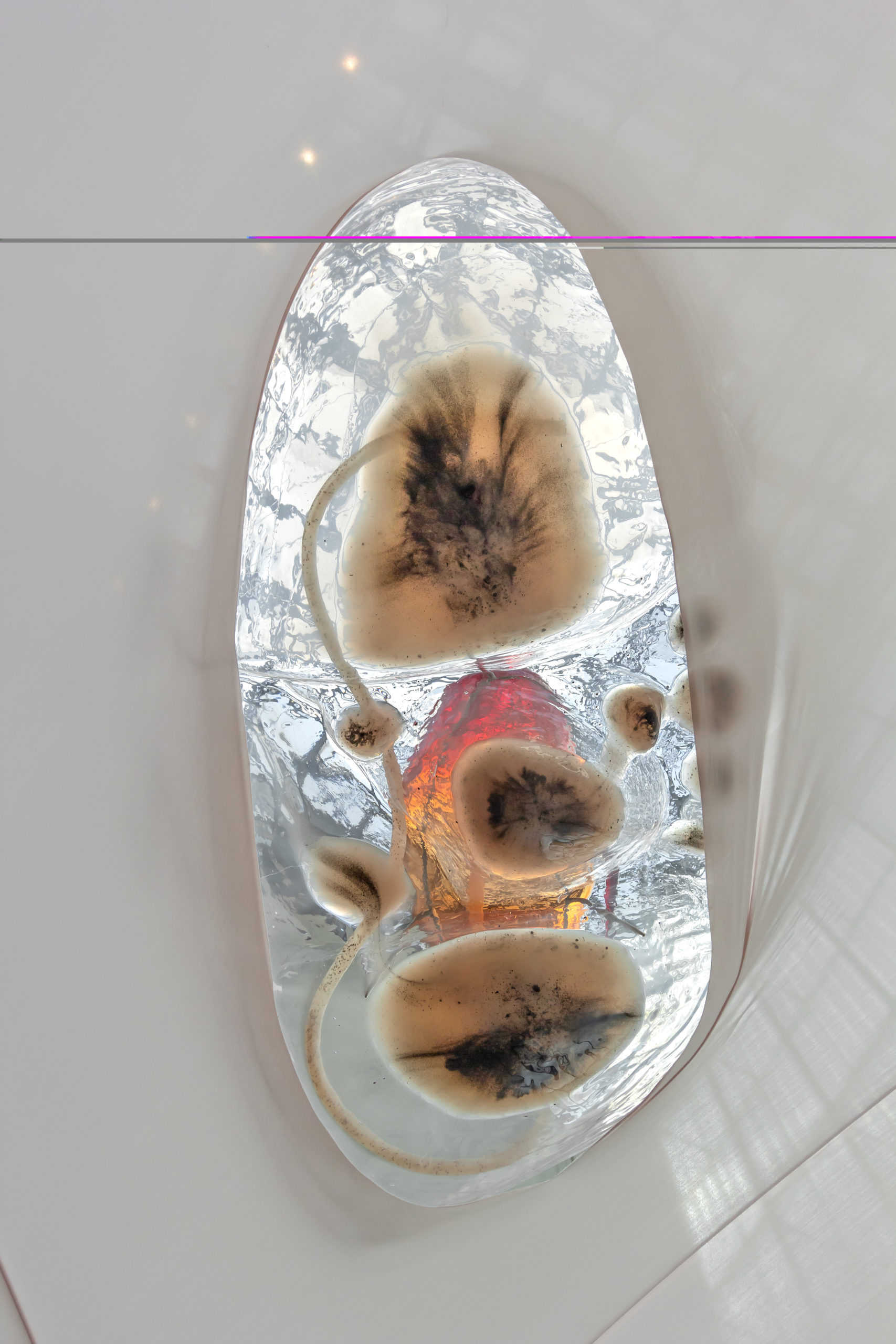
In Virtual Care, bodies are abstracted into semi-translucent “shells” placed on stainless steel pedestals that refer to surgical tables. It’s as if they’re no longer or not-yet here, ready to evaporate at any moment. Yet they’re open for the viewer’s gaze and the gaze of those round glass “lenses” that are either surveilling these bodies or watching them with care (which depends on the viewer’s own reading). This was our attempt to present vulnerable and malfunctioning bodies taken care of by technology—or not the body itself, but rather its already mediated version, lingering between physical and virtual realms.
Pakui Hardware, Virtual Care
Opening early 2021 at BALTIC (exact dates to be announced)
VISIT WEBSITE